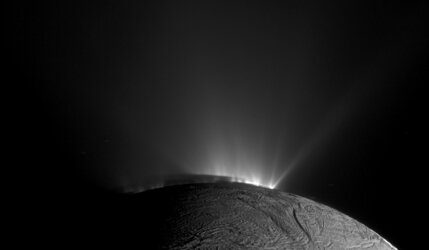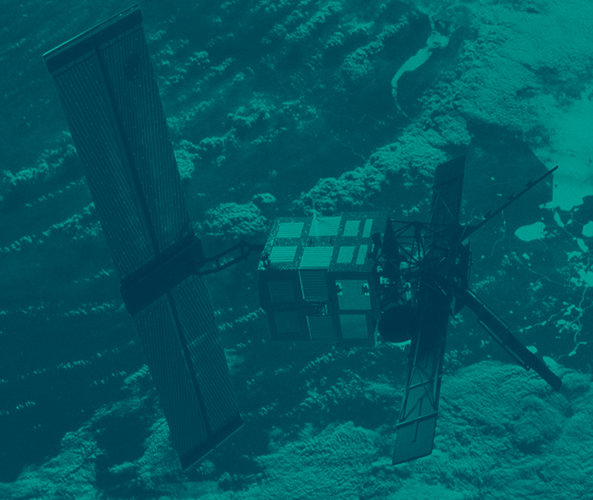Protecting our planet's ozone layer
Monitoring our planet's atmosphere has become an international priority. As successive world summits have stressed, our future on Earth could depend on safeguarding our environment. EuroNews 'Space' magazine reports today from the Royal Netherlands Meteorological Institute (KNMI) which is using instruments on several satellites to follow the evolution of ozone around the planet.
The gas comes in two flavours. On the one hand, at an altitude of 20-30 kilometres, natural ozone provides a protective layer, absorbing the Sun's harmful ultra-violet radiation. This 'good' ozone protects us from sunburn, skin cancer and eye problems.
On the other hand, under the influence of sunlight, nitrogen oxides and hydrocarbons create toxic ozone on Earth's surface. This 'bad' ozone, part of air pollution or smog, may pose a particular health threat to those who already suffer from respiratory problems such as asthma, emphysema and chronic bronchitis.

ESA's Earth observation satellite Envisat is one of the satellites sending back data to scientists at KNMI in Utrecht. One of its instruments called Sciamachy (Scanning Imaging Absorption Spectrometer for Atmospheric Chartography) monitors ozone and other trace gases on a regular and global basis.
"The data from this instrument allows us to calculate the amounts of ozone from day to day," explains Dr Henke Eskes, atmospheric scientist at KNMI. "The coverage maps we obtain show the great variability of the ozone layer and we can precisely track the evolution of the ozone hole above the South Pole."
Another European satellite ERS-2 carries a similar instrument called GOME. The United States also has a long experience in ozone monitoring with the TOMS (Total Ozone Mapping Spectrometer) instruments, and with its NOAA Earth observation satellites.

Since last summer NASA has its AURA mission, dedicated to the study of the Earth's ozone, air quality and climate. The KNMI has the scientific lead of the Dutch-Finnish Ozone Monitoring Instrument (OMI) on AURA.
"OMI works by looking down at the Earth and measuring how much sunlight is reflected by the planet," says Pieternel Levelt, OMI's Principal investigator. "This provides indications of how much is being absorbed by atmospheric ozone."
The 'good' ozone is under attack from man-produced species containing chlorine and bromine. Amongst these are the famous CFCs, Chlorofluorocarbons, which were used for instance in refrigerators, spray cans and foams. These CFCs greatly contributed to eating away the natural ozone.
Efforts to safeguard our environment and the ozone layer appear to be fruitful. Banning of CFCs by the 1987 UN protocol seems to have stabilised the ozone hole. But the road ahead is still long: KNMI experts expect that pre-1980 average conditions of the 'good' ozone will only be recovered around 2050. The 'bad' ozone is a point of concern: studies predict that the rapid development of mega-cities and related increases in traffic will worsen the situation, increasing surface ozone.
EuroNews
EuroNews is a key medium for delivering international information with a European point of view. Broadcast in 79 countries, EuroNews reaches 144 million households in Europe, the Middle East, Africa, Central Asia and North and Latin America via cable, digital satellite and through terrestrial channels. This Space Magazine is produced and broadcast every two weeks, with a new programme starting every second Friday. Each magazine is four minutes long and broadcast 21 times in one week, including evening prime time on Fridays and Saturdays, in order to reach a maximum audience.
Broadcast times
| Monday | 12:45 | 18:15 | 00:15 | |
|---|---|---|---|---|
| Tuesday | 12:45 | 18:15 | 00:15 | |
| Wednesday | 12:45 | 18:15 | 00:15 | |
| Thursday | 12:45 | 18:15 | 00:15 | |
| Friday | 17:45 | 20:45 | 00:15 | |
| Saturday | 12:45 | 21:15 | 00:15 | |
| Sunday | 12:45 | 18:15 | 00:15 |















 Germany
Germany
 Austria
Austria
 Belgium
Belgium
 Denmark
Denmark
 Spain
Spain
 Estonia
Estonia
 Finland
Finland
 France
France
 Greece
Greece
 Hungary
Hungary
 Ireland
Ireland
 Italy
Italy
 Luxembourg
Luxembourg
 Norway
Norway
 The Netherlands
The Netherlands
 Poland
Poland
 Portugal
Portugal
 Czechia
Czechia
 Romania
Romania
 United Kingdom
United Kingdom
 Slovenia
Slovenia
 Sweden
Sweden
 Switzerland
Switzerland



























